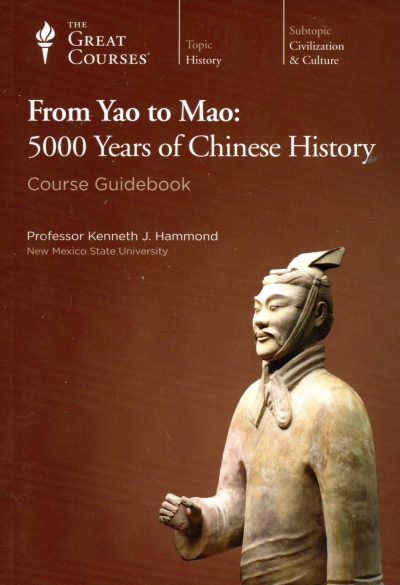 So I had expected to listen to this course, one from my personal library, on trips to St. Charles or the trip from Springfield to Poplar Bluff to St. Charles to Springfield that I’d planned to take last month, but unfortunately, I did not get that travel time, so I’ve been listening to it in fits and starts in my back-up truck.
So I had expected to listen to this course, one from my personal library, on trips to St. Charles or the trip from Springfield to Poplar Bluff to St. Charles to Springfield that I’d planned to take last month, but unfortunately, I did not get that travel time, so I’ve been listening to it in fits and starts in my back-up truck.
And, to be honest, I was not making excuses to drive the truck just to listen to more of the course.
The course looks at parts of the Bible in the context of genre literature, whether it’s because the part of the Bible being examined is part of that genre or tradition or because other works in the genre might have their roots or allusions to Bible parts.
Lectures include:
- Authorship and Style in the Torah
- Cain and Abel in Story, Theology, and Literary History
- Icons and Iconoclasm: From Moses to Milton
- The Story of King David, or the Varieties of Love
- The Song of Solomon: The Poetry of Sacred and Profane Love
- Psalms: The Poetry of Praise and Supplication
- Proverbs: The Way to Wisdom
- The Book of Job: The Problem of Evil and the Aesthetics of the Sublime
- Ecclesiastes and the Questioning of Wisdom
- Isaiah and Prophecy
- Typology: The Life of Christ as Fulfillment of the Old Testament
- Parables: The Form of Jesus Preaching
- Paul: The Letter and the Spirit of the Law
- The Book of Revelation and the Symmetry of the Christian Bible
The course overlaps enough with The History of the Bible: The Making of the New Testament Canon that it felt almost like a reprise at times. Some of the connections to modern (or at least more recent) literature seemed a bit thin, but perhaps I’ve already studied enough literature and its biblical allusions that it wasn’t fresh.
I guess I got the most out of the penultimate lecture on the spirit versus the letter of the law. So I did get something out of it, but that’s only a little out of, what, eight or ten hours of listening?
Probably I am being too hard on it; surely, repetition of things I’ve already heard or learned solidified it in my mind a bit, but it’s not as stark or startling (or pleasing) as completely new information.
So what I’ve said about the audio courses I listen true holds: The more it aligns with the fields I’ve studied / read a lot of already (English literature, philosophy), the less I actually get out of it or the more bored I am with it. The audio courses I like the most are the ones that teach me the most I don’t know. Unfortunately, in the past, I’ve tended to pick those very courses that will bore me up at library book sales and whatnot. Well, I did, until I discovered the secret. Now I look for courses in interesting disciplines that I don’t have a degree in, or I get them from the library, and I get more from them.
And the vast library of courses I already own, these I shuffle in from time to time.
So, do I recommend it? If you’re not already versed in the material, it might be worth your time. Or if you have a long commute or lots of time in the car and need something besides the desiccated playlists of modern FM radio.



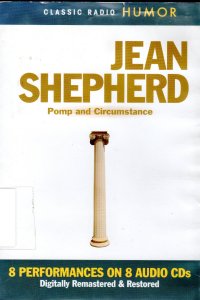 You’re familiar with his work and his voice–he wrote the the basis for A Christmas Story and narrated it–and he had a long-running radio program back in the northeast where he would spend an hour minus commercials taking a topic and going off on a monologue with diversions about it.
You’re familiar with his work and his voice–he wrote the the basis for A Christmas Story and narrated it–and he had a long-running radio program back in the northeast where he would spend an hour minus commercials taking a topic and going off on a monologue with diversions about it. This course extends the lecture on the Inquisition from
This course extends the lecture on the Inquisition from 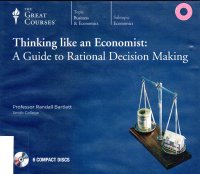 This Great Courses series of lectures provided an interesting insight into Economics, or more to the point the mindset of economists, and not necessarily in the way the professor behind it intended.
This Great Courses series of lectures provided an interesting insight into Economics, or more to the point the mindset of economists, and not necessarily in the way the professor behind it intended. This course offers a history of how the books of the New Testament became the canon. I guess the title indicates that. But it’s not a straight ahead timeline of the conscious development of the New Testament. Instead, it’s more of a survey of different things to consider when looking at the history. It discusses the different types of literature in the New Testament, the Gospels, the epistles, and apocalyptic literature. It touches on apocrypha that did not make the final cut (and sometimes why). It talks about the creation of the written literature as the church evolved and needed a central repository of teachings to share among the scattered churches. It also talks about copying errors and whatnot and a touch of church history.
This course offers a history of how the books of the New Testament became the canon. I guess the title indicates that. But it’s not a straight ahead timeline of the conscious development of the New Testament. Instead, it’s more of a survey of different things to consider when looking at the history. It discusses the different types of literature in the New Testament, the Gospels, the epistles, and apocalyptic literature. It touches on apocrypha that did not make the final cut (and sometimes why). It talks about the creation of the written literature as the church evolved and needed a central repository of teachings to share among the scattered churches. It also talks about copying errors and whatnot and a touch of church history. 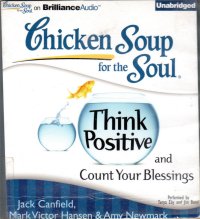 This audiobook is a collection of sort little essays about, well, counting your blessings and finding the bright side of things. It has eleven pieces by eleven authors. One of them is, literally, a woman who enumerates one hundred blessings, so it’s a couple minutes of sentence fragments.
This audiobook is a collection of sort little essays about, well, counting your blessings and finding the bright side of things. It has eleven pieces by eleven authors. One of them is, literally, a woman who enumerates one hundred blessings, so it’s a couple minutes of sentence fragments. This is a short course from the Modern Scholar series that focuses on myths and stories from the Middle Ages and how true they are. The four discs / eight lectures cover:
This is a short course from the Modern Scholar series that focuses on myths and stories from the Middle Ages and how true they are. The four discs / eight lectures cover: So the guidebook to this course presents me with a little dilemma: Should I count it as a book against my annual reading or not? I mean, I counted the guidebook for the course
So the guidebook to this course presents me with a little dilemma: Should I count it as a book against my annual reading or not? I mean, I counted the guidebook for the course 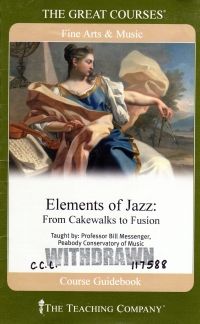 I go through phases listening to these CD courses, and I think I’ve figured out the secret. I tend to accumulate courses in subject areas with which I’m already familiar, like philosophy or literature, and they underwhelm or bore me. That, and if they’re a summary course from the 21st century, I’ll find enough to disagree with politically to not really want to finish them. But something I’m not really familiar with, such as deep dive history courses (not summary courses) or music courses, these I listen to with some zeal, and I learn a lot more from them probably because they’re completely new knowledge to me and not merely rehashing what I already know.
I go through phases listening to these CD courses, and I think I’ve figured out the secret. I tend to accumulate courses in subject areas with which I’m already familiar, like philosophy or literature, and they underwhelm or bore me. That, and if they’re a summary course from the 21st century, I’ll find enough to disagree with politically to not really want to finish them. But something I’m not really familiar with, such as deep dive history courses (not summary courses) or music courses, these I listen to with some zeal, and I learn a lot more from them probably because they’re completely new knowledge to me and not merely rehashing what I already know.